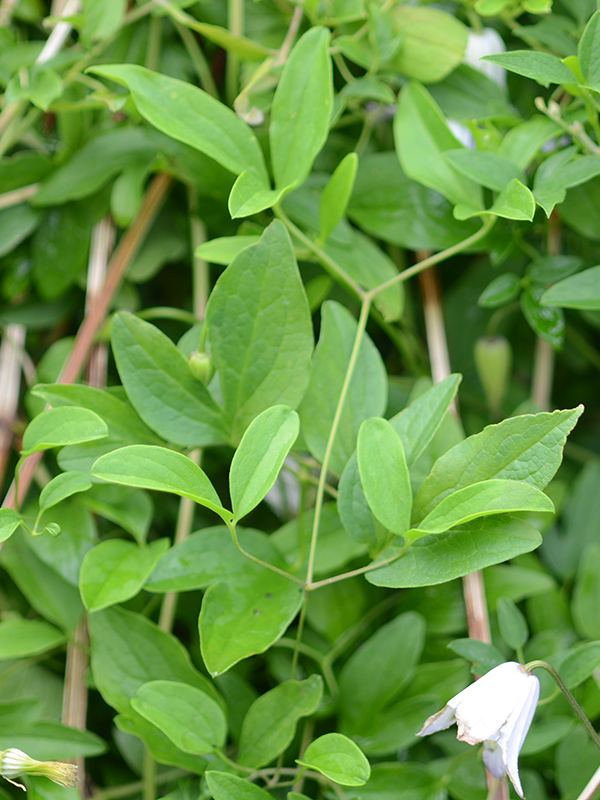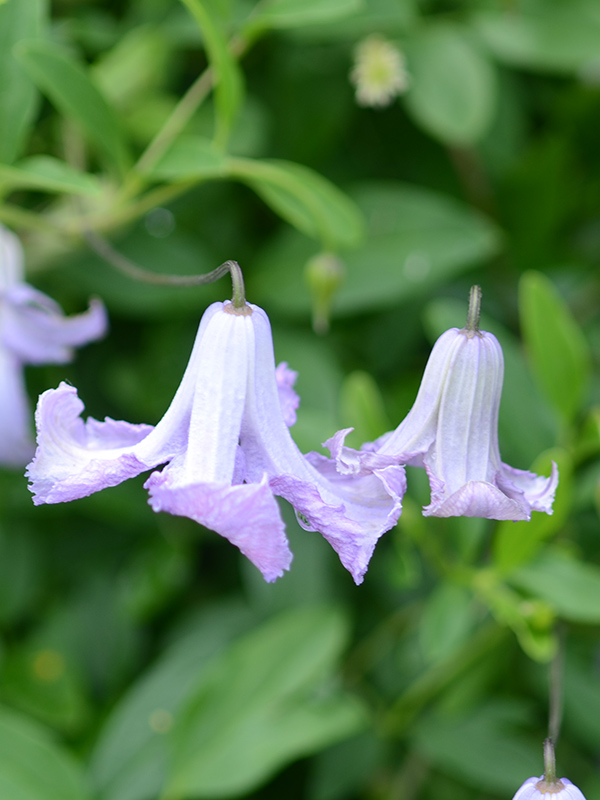| General Description | Clematis ‘Betty Corning’ is a slightly fragrant clematis that has drooping pale pinkish-blue, bell shaped flowers. |
| ID Characteristic | The identifying feature of this plant is its hundreds of 5 cm length four pale pinkish-blue flower petals that have a white cross inside the base and pale yellow anthers. |
| Shape | Spreading, climbing vine. |
| Landscape | A plant with lightly scented flowers that will grow on a trellis, wall, arbour, fence or trees. In contrast to members of the Viticella group, it should not be used as a ground cover plant, as the attractive, bell-shaped, scented flowers cannot be completely appreciated. |
| Propagation | Propagate by placing sections of younger stems under the soil (layering) to encourage new roots to form or by taking semi hardwood cuttings in late summer to mid-autumn. |
| Cultivation | Plants prefer full to partial sun with a cool shaded root zone with the crown being 5-8 cm deep in moist well drained soil. Prune in February or March (late winter to early spring) to encourage flowering on current seasons growth. This will also prevent flowering above eye level. |
| Pests | Pests such as caterpillars and aphids may feed on young shoots and foliage; earwigs may feed on the petals. Clematis wilt is caused by the fungus Phoma clematidina with the symptoms evident through wilting leaves, leaf stalks turning black and then with the stems starting to quickly wilt. There are no chemical controls available to treat Clematis Wilt. If an infection is apparent, cut the wilted stems back to the healthy tissue. Tools used should be disinfected thoroughly and removed infected tissue should be destroyed to prevent any further soil or plant infection. |
| Notable Specimens | The A.M. Cuddy Gardens, Strathroy, Ontario, Canada. Montreal Botanical Gardens, Montreal, Quebec, Canada. |
| Habitat | Horticultural origin. |
| Bark/Stem Description | Brittle; light to dark brown, thin bark. |
| Flower/Leaf Bud Description | Buds are a light green and teardrop shaped. |
| Leaf Description | The leaves are mid-green in colour, composed of 3 leaflets up to 6
cm in length.
|
| Flower Description | Flowers are 5 cm in length and 5 - 6.5 cm across. They are lightly tangerine scented and have pale pinkish-blue flower petals that are pinkish mauve inside with a white cross at the base; bell-shaped and nodding with pale yellow anthers. |
| Fruit Description | The seed heads are plumose, light brown in colour and 2.5 - 3 cm in length. |
| Colour Description | In the growing season the leaves are a mid-green colour while the flower petals are a pale pinkish-blue. The bark is light to dark brown. |
| Texture Description | In the spring new growth is fine textured and becomes medium textured when mature; flowers are fine textured. |

